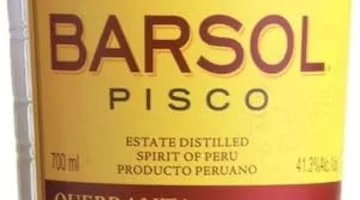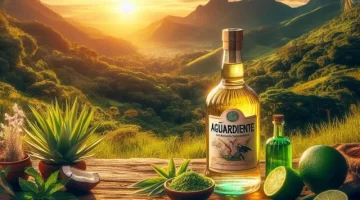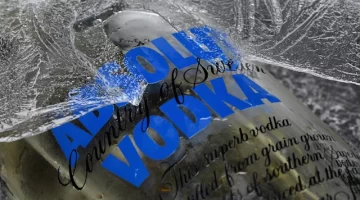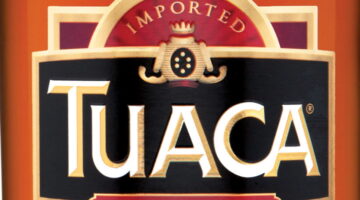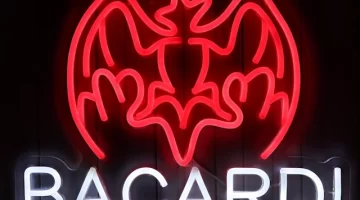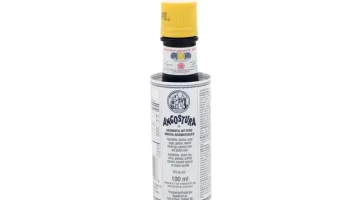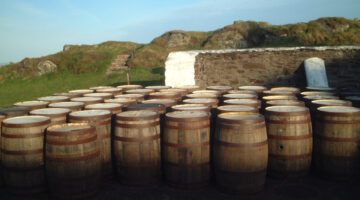The Terroir of Whiskey
The Terroir of Whiskey takes Texas distiller Rob Arnold on a journey round the distilleries of the world to discover whether whiskey, like wine, has terroir.
Update: this book was named Best Science Book 2021 by Liquor.com!
Does whiskey have terroir, or is this something exclusive to wine? William Borrell of Vestal Vodka maintained several years ago that vodka definitely had terroir, based round the type of potatoes, the different annual crops, and the particular land and water of his family farm in Poland. It’s a notion that has been greeted skeptically by some people, who maintain that terroir is easy to use as a buzz-word, to give some kind of authenticity to a spirit.
Terroir and Mezcal
My own feeling is that you only have to look at how mezcal is produced in Mexico to know that terroir is not something that wine has an exclusive right to. Mezcal is generally made very locally, in small batches, by family distillers, using local agave, and differs from year to year depending on the weather and other factors. The parallels with wine-making are obvious. If anything, mezcal is more likely to have terroir than many mass-produced wines.

The Terroir of Whiskey Author
 Rob Arnold is someone who has an especial interest in the topic, specifically as it relates to whiskey. He’s a third-generation member of the whiskey industry, is the master distiller at the TX Distillery in Texas, and is also doing a PhD in plant breeding and genetics at Texas A&M University. He’s the author of one previous book, Shots of Knowledge: The Science of Whiskey. As a scientist, it’s not enough for him to believe that whiskey must have terroir, he wants to know what we mean by terroir, how can you measure it, and can you prove that it exists in a scientific way?
Rob Arnold is someone who has an especial interest in the topic, specifically as it relates to whiskey. He’s a third-generation member of the whiskey industry, is the master distiller at the TX Distillery in Texas, and is also doing a PhD in plant breeding and genetics at Texas A&M University. He’s the author of one previous book, Shots of Knowledge: The Science of Whiskey. As a scientist, it’s not enough for him to believe that whiskey must have terroir, he wants to know what we mean by terroir, how can you measure it, and can you prove that it exists in a scientific way?
The Terroir Journey
Arnold’s investigation becomes a quest that sends him around the world, firstly to Napa Valley in California to discover what winemakers believe contributes to terroir. He then travels to distilleries in New York, Kentucky, Ireland, and finally to Scotland, his researches all the while influenced by what he himself is doing in Texas, working with a local farmer growing specific crops for the TX Distillery.
The Science of Terroir
I must admit I found the first half of the book hard-going, but it’s a necessary part of what the author wants to research. If you’re a whiskey or distilling geek then you’ll probably find it fascinating, though.
Arnold explains that the smelling of spirits is far more important than the tasting of them. When tasting we can only really detect the five basic tastes: sweet, sour, salty, bitter, umami. However, scientists estimate that the human nose is capable of distinguishing at least 10,000 different aromas… and of course some people are more sensitive than others.
Flavor Compounds
 When we smell a wine or a whiskey, what are we smelling? We’re smelling flavor compounds. If you sniff a whiskey and part of the aroma smells like banana, you’re actually smelling isomayl alcohol or isoamyl acetate, or perhaps ethyl octanoate. These are all chemicals that smell like what everyone knows as a banana smell. At the most basic level, if you smell a wine and say that ‘this smells like wine’, then there are only 18 flavor compounds that make up that smell.
When we smell a wine or a whiskey, what are we smelling? We’re smelling flavor compounds. If you sniff a whiskey and part of the aroma smells like banana, you’re actually smelling isomayl alcohol or isoamyl acetate, or perhaps ethyl octanoate. These are all chemicals that smell like what everyone knows as a banana smell. At the most basic level, if you smell a wine and say that ‘this smells like wine’, then there are only 18 flavor compounds that make up that smell.
The first part of the book is filled with tables that explain these break-downs, so for me there was a lot of fast-forwarding, though it was good to discover that you can indeed smell general concepts like ‘cold’ and ‘warm’, something I’ve always thought when smelling spirits, even though it seemed illogical.
Why Flavor Compounds?
Why are flavor compounds important? Because they enable us to analyze what we’re smelling and tasting, and if the terroir of whiskey has any meaning, you need to be able to drill down and understand the science. If the whiskey from one distillery tastes different from another that’s fifty miles away, why is that?
Sure, it may be the techniques being used, but when it comes to the impact that location and local ingredients have, you can only measure that if you know what you’re measuring. If you’re a distiller and you use Crop A from Farm A and you get this result, and you make a whiskey in exactly the same way but using Crop A from Farm B fifty miles away, why do they taste different, and what are the differences?
Travel to Terroir
For me the book came alive when the author started visiting the distilleries. His journey began in the unlikely setting of Manhattan (home of Whiskey Advocate magazine) and took him by way of Brooklyn and Kentucky to select distilleries such as Rabbit Hole, The Waterford Distillery in Ireland, and finally Bruichladdich on Islay in Scotland.
Arnold chose the distilleries because he knew that they were at the forefront of experiments to prove that terroir in whiskey does exist. It was his visit to Waterford that really opened his eyes. The distillery says that it is producing ‘terroir-driven single malt Irish whisky.’ They also initiated the Whisky Terroir Project, and produce single-farm origin whiskies in small batches.
The author visits some of the farmers and sits down and tastes their whisky with them, at their kitchen tables, surrounded by the grain that went into the whisky. It doesn’t get more local than that.
Bruichladdich
The Waterford Distillery was set up by Mark Reynier, the man who had previously revitalized Bruichladdich on the Scottish island of Islay, and this forms the final stop on the author’s mini-tour. Bruichladdich is also producing intensely-local whiskies, and experimenting with grain sources to see what happens. One of their farmers is growing rye for them, the first time the crop has ever been grown on Islay, the belief being that if you don’t try, you’ll never discover if it’s possible.
Conclusion
At the end of his fascinating journey, we go back to those flavor compounds:
‘I largely wrote this book because I wasn’t satisfied with the endless debates and ambiguous, airy explanations of terroir. But when we talk about the experience of drinking whiskey, it’s not just the detection of flavor compounds in our nose and tastebuds. It’s also the experience of the whiskey’s identity – its origin, its heritage, its history. That identity is inextricable from the people who made it and the place that made them.’
Buying The Terroir of Whiskey
The Terroir of Whiskey is available on Amazon.

